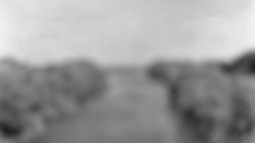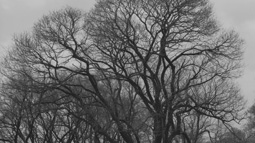Focus features two in-depth reviews each month of fine art, architecture and design exhibitions and events at art museums, galleries and alternative spaces around Japan. The contributors are non-Japanese art critics living in Japan. |
|
|
 |
 |
 |
Faraway, So Close: Motonori Inagaki
Matthew Larking |
 |
 |
|
 |
| "distance 1," lambda print, mounted with plexiglass, 90 x 160 cm, ed.5, 2008 |
|
"distance 4," lambda print, mounted with plexiglass, 90 x 160 cm, ed.5, 2008 |
The art historian Richard Shiff recently gave voice to the contemporary "hunger for experience that escapes conceptualization," returning forms "to the world of sensation and emotion, to feeling." Such a world is none too far from that envisioned by Motonori Inagaki (b. 1971) in his recent exhibition "distance" at Osaka's Nomart Project Space, Cube & Loft. Inagaki overlays an interpretative obfuscation on his drawing, video and photographic works, conceiving for them, as the first line of the artist statement goes, in a literary translation, "what eyes can't see, and words can't capture." Initially it seems an odd gloss to give a visual art exhibition. The finer point for Inagaki, however, is for his imagery to avoid subjugation to rules (language), and for the visual image to take on enough vagueness so as never to prove too definite.
Explaining the attitude that needs to be tried on to understand Inagaki's works on the terms he sets for them, the artist offers a slightly unnerving experience. Conceiving that between objects and the perceiving subject intervenes a translucent film that mediates the encounter with the world, Inagaki relates the following story. While he was in the passenger seat of a car driven by a friend, they rear-ended a car in front. Rather than sensing the imminent danger of the situation as it was taking place, Inagaki took in the event at a blurry remove. Seen from the back seat of the car in front, Inagaki was observed to have not even trembled, in contrast to the excited actions of the driver. This, then, is the kind of "distance" with which he has tried to imbue his most recent works.
To create this distance, Inagaki has employed conventional black and white realistic photography to reconstruct an abstract inner conception held by the artist when before an actual scene. The majority of his subject matter is natural, either caught in sharp focus or blurred beyond recognition (in which case it is usually suggestive of landscape), unemotional, and perhaps even banal. In one video work cast upon the wall of the gallery, "distance A-B" (2008), trees waver in the wind, sometimes violently, at other times hardly at all -- analogous to Inagaki's "remove" and his driver's fevered reactions. In another scene, little waves breaking in a middle ground contrast with the minimal surface movements of another body of water in the foreground. All this naturalness, however, is imbued with a surreal tinge. A clump of hair, another favored motif of Inagaki's, seems to rise up of its own volition, or a copse of trees seems to conceal something within. A further psychological tinge is provided by a soundtrack consisting of hissing static.
To capture the desired quality of vagueness, the artist devotes meticulous attention to the avoiding of particulars. One often cannot determine conventional features of the landscape, such as the time of day, whether it is summer or winter, or if it is hot or cold. Time, too, seems out of kilter, slowed down, and narrative is consciously avoided. It is almost a primordial glimpse of the world before there were names for seasons or time was divvied up. If the imagery becomes too concrete, if a narrative begins to emerge, then the essence of what Inagaki wants to "capture" begins to dissolve. Hence natural landscape scenes of ground, hills and skies are presented as physical forms in various states of dissolution, eclipsed by the sky above, or by a more base mist or dust from below. Further cryptic forms are offered in the series of drawings "distance 101-115" (2008), which either convey an affinity to strands of hair, landscapes, and veils, or appeal to decidedly abstract interpretations.
Arguably, the pictorial intention carries some minor resemblance to a conception of Impressionism. To twist a comment by Cezanne, "(photographing) from nature is not copying the object, it is realizing one's sensations." As painting was for the Impressionist artist, photography for Inagaki is not the recording of objects before him, but the realization of his experiences before them. The troubling point, however, is that this is neither conceptualizable (capable of being named), nor specifically visual: the aim is to draw out latent memories or an unevenness of thought or sensation. When Inagaki insists on his own subjectivity in these matters of eye and mind, on a shift from an objective stance in photography that takes up the representation of an outer world to the representation of an inner one, such experiences are no longer public. As such, they can potentially exist without being shared, so that the intention is not fully realized by viewers, though it contributes to the making of the works all the same. An alternative spin is to see Inagaki regarding seeing alone as an unreliable guide, unduly limiting his particular variety of representation.
 |
 |
Matthew Larking
Matthew Larking is an art historian based in Japan's old capital, Kyoto. He frequently writes art criticism concerning modernism and contemporary art in Japan and more broadly, Asia. His principal interests revolve around the development of modernism in the Asian context and its contemporary resonances.
|
|
 |
|